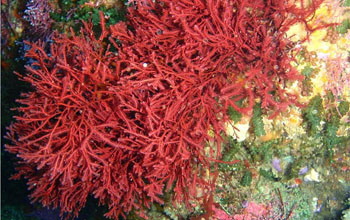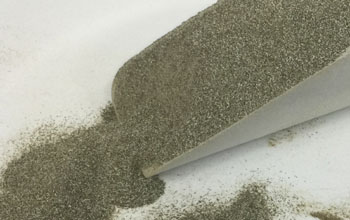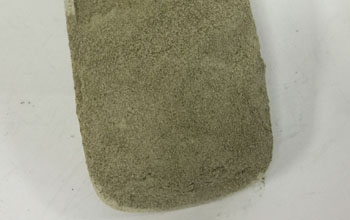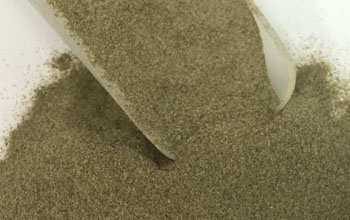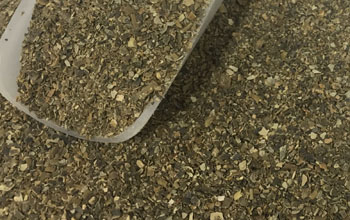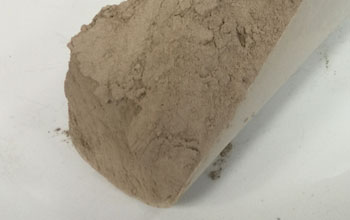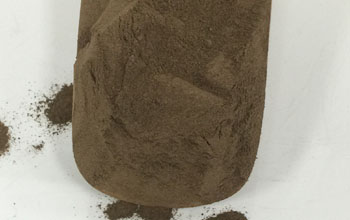
Sargassum fusiforme is a brown seaweed with several stipes arising from common holdfast area. These form the main axes of the plant from which short branches of variable sizes grow in whorls. The yellow-brown color of the alga turns to nearly black when dried.
Classification
Empire Eukaryota
Kingdom Chromista
Phylum Ochrophyta
Class Phaeophyceae
Order Fucales
Family Sargassaceae
Genus Sargassum
Homotypic synonyms
Cystophyllum fusiforme, Turbinaria fusiformis, Hizikia fusiformis
Geographical distribution
S. fusiforme is found growing attached to rocky substrate on coastlines of Japan, Korea and China. It is often torn loose by waves and released to a free-floating form. Large Sargassum beds, including S. fusiforme find their way to the Sargasso Sea of the Atlantic Ocean.
Composition
The International Journal of Basic and Applied Sciences provides the following values for S. fusiforme determined by El-Shafay:
Ash: 0.33%
Moisture: 0.0686%
Protein: 8.85%
Carbohydrates: 90.71%
Lipid: 0.0204%
Beta-carotene: 201.47 IU/100 mg
Total phenol: 74.97 ppm
Potential therapeutic applications
Researchers from Albany Medical College and other associated institutions isolated a S. fuciforme fraction promising to be a potent and specific inhibitor of HIV-1 fusion and reverse transcriptase. An Open Access article under the Creative Commons Attribution License was published by Paskaleva at al in 2008. The results pointed to at least two distinct and biologically active molecules contained within the isolated SP-4 fraction. One inhibits HIV-1 fusion by interacting with CD4 receptor, the other directly inhibits HIV-1 RT. The scientists proposed that S. fusiforme is a lead candidate for anti HIV-1 drug development. http://www.virologyj.com/content/5/1/8
A prior publication by Paskaleva at al (2006) reported S. fusiforme extract to be a potent inhibitor of highly productive HIV-1 infection and replication in T-cells, in primary human macrophages, microglia and astrocytes. http://www.ncbi.nlm.nih.gov/pubmed/16725040
A study published in 2014 by Paskaleva at al determined Palmitic Acid (PA) derived from S. fusiforme to specifically inhibit HIV entry by binding to a novel pocket on the CD4 receptor. A structural analog was also identified as a more effective HIV entry inhibitor with a 20-fold increase in efficacy. The PA derivative is undergoing pre-clinical screening in the drug development process.
http://www.ncbi.nlm.nih.gov/pubmed/24667334
Common use
S. fusiforme has been used in traditional medicine for centuries. It is said to aid in skin and hair health and prevent anemia. The high iodine content also makes it ideal for fighting goiter.
The alga is enjoyed as part of Asian cuisine for its nutty flavor.
Although, the UK Food Standards Agency and its counterparts in other countries have warned consumers not to eat hijiki because of its inorganic arsenic content. In a study published in 2012 by Yokoi and Konomi, dietary exposure to hijiki in rats was examined. Diet supplemented with 3% (w/w) hijiki powder for 7 weeks led to a marked accumulation of arsenic in blood and tissue and to abnormalities consistent with arsenic poisoning.
Cosmetic products cotaining S. fusiforme extract
S. fusiforme extract is generally found in skin toners, moisturizers and anti-aging treatments.
